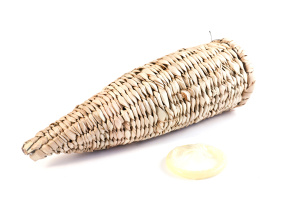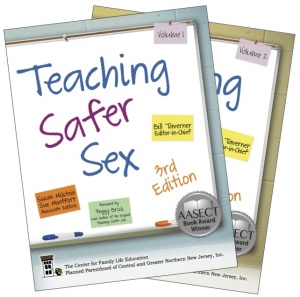 As we continue to dive into Teaching Safer Sex, I want to draw attention to Volume 2, Section 2, which is titled “Socio-Cultural Aspects of Safer Sex.”
As we continue to dive into Teaching Safer Sex, I want to draw attention to Volume 2, Section 2, which is titled “Socio-Cultural Aspects of Safer Sex.”
Because really, what doesn’t have socio-cultural overlays on it? Condoms? Hormonal birth control? Consensual decision making? The implications about the group and cultural statements around these topics are huge. But let’s start with condoms today.
THEY AIN’T WHAT THEY USED TO BE: Historical and International Perspectives on Condoms and STI Prevention
Objectives
By the end of this lesson, participants will be able to:
- Explain how the subjects of sexually transmitted infections and condoms were addressed at different points in history.
- Describe the increased availability and quality of condoms during the past 50 years.
- Compare and contrast modern condom marketing campaigns in the United States to those in other nations, and plan an imaginary campaign to increase condom use.
Rationale
Throughout most of human history, heterosexual couples have been vulnerable to unplanned pregnancies as well as sexually transmitted infections. A variety of early condoms were designed for disease prevention by early sexual health advocates, and although rubber condoms became available in the early 1800s, they were thick, uncomfortable and not very effective. In addition, from 1873 to 1965 in the United States, federal and state “Comstock Laws” forbade the promotion and distribution of any contraceptive, including condoms. In contrast, today’s condoms are greatly improved and are recommended by the Centers for Disease Control and Prevention. This lesson emphasizes that today, as never before in history, people can significantly reduce their risks of contracting a sexually transmitted infection and an unplanned pregnancy by using condoms consistently and correctly. After reviewing condom marketing in other countries, participants identify a strategy they believe would be successful for promoting condoms in the United States.
I find many of my students are shocked to learn that condoms – and even distributing information about birth control – used to be illegal. The condom timeline – from ancient history and before the 15th century through 2009 – is the real winner in this lesson plan. The details are fantastic and makes me, for one, grateful for the ease of use and accessibility that the modern condom provides us.
While not included in this particularly focused history about contraceptives, I am particularly fond of sharing other contraceptive historical details with students. For example:
- A whole plethora of random objects inserted into the vagina in an attempt to cover the cervix (including, but not limited to, lily root, buttons, beeswax, and crocodile dung);
- Condoms made from sheep intestines;
- Jumping up and down really hard;
- Dry ejaculation; and
- possibly the least effective method, yelling “NO BABY” at the moment of male ejaculation.
Understanding how far we have come in addressing both STI transmission and unplanned pregnancy is useful – for the professionals in our field, but also for the people (young and not so young!) that we teach. I mean, it’s also kind of fun and crazy to think what people used to do for contraceptive and STI protection. I wonder what the future will hold and how we’ll evaluate the condoms and hormonal birth control we use now in another two hundred years?






